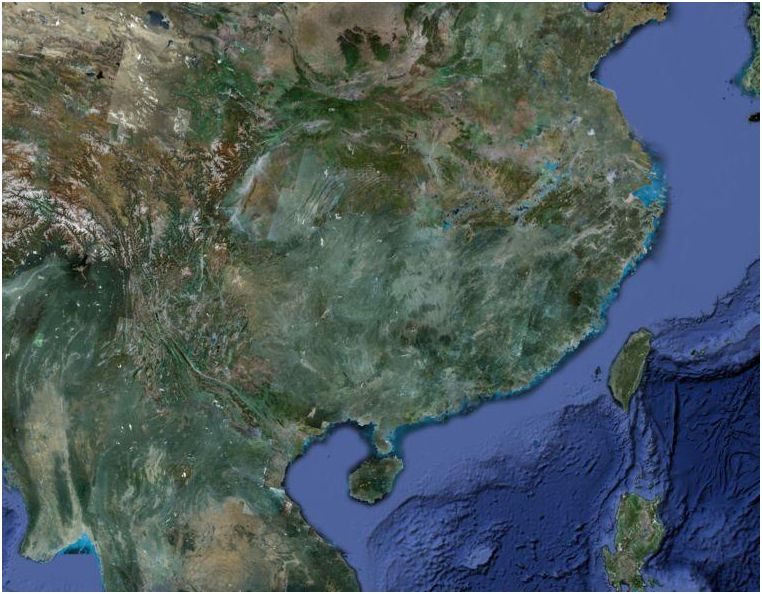This column was published by The Myanmar Times on Monday, 13 July 2015
China’s leaders are looking to convince us that their dreams of “one belt, one road” can lead to a new wave of global prosperity. These initiatives are designed to enmesh partners from near and far in a Chinese-led network of investment and economic growth.
The Silk Road Economic Belt runs straight out into Central Asia from China’s metropolises. With new train routes, roads and tunnels, it will offer the economic juggernaut better access to a sprawling Eurasian backyard and the lucrative European market beyond.
The Maritime Silk Road will latch on to the Bay of Bengal – and therefore Myanmar – as it snakes its way right around to the Mediterranean. It is supposed to secure energy supply chains and access to new markets across southern Asia, the Middle East and Africa. It is an oversized plan meant to fill the appetites of the world’s most populous country.
With all those growing bellies being fed, it will need to be a big belt and an enormous road – one that will encircle and possible entwine Myanmar, joining an estimated 2 million Chinese citizens and former citizens who already call the country home.
Across Shan and Kachin states, and right down into central Myanmar, these ethnic Chinese enjoy a dominant commercial status. In certain corners of the country, in places like Mong La and Laiza, Chinese-language skills are essential for business.
The fact is that Chinese investors bring technical and financial muscle that is rarely found on the Myanmar side of the border. The headline investments – like the off-shore oil and gas fields in Rakhine State, the postponed Myitsone hydroelectric dam in Kachin State and the contentious Letpadaung copper mine in Sagaing Region – tend to get the attention, but these are only the start.
In construction, energy, manufacturing and services there are dozens of new Chinese players, some of whom have enjoyed unimaginable success back in China. Backed by the Chinese government, they want to seize the opportunities available next door. The brand-new Asian Infrastructure Investment Bank promises to further change the equation in favour of Chinese companies.
For its part, the Chinese government inevitably has firm ideas about how Myanmar fits into its bold plans for 21st-century economic development. It sees the country as a key site for large-scale Chinese projects, including the dams, bridges, roads and ports that will be the concrete-and-steel manifestation of the “one belt, one road” idea.
How can Myanmar respond? Naturally, some key decision-makers in Nay Pyi Taw are reluctant to give the Chinese any more access to their markets and resources. Myanmar’s ongoing political transformation can be explained, in part, by a desire to create diverse international partnerships. The embrace of officials, businesspeople and academics from the Western democracies is caught up in this story.
Yet there is no advantage for Myanmar in ignoring the Chinese plans or their global implications. The oil and gas pipelines that now dissect Myanmar territory have already re-configured the regional economic landscape. The oil pipeline was built to carry a maximum capacity of 440,000 barrels of oil a day, which is just shy of 5 percent of China’s daily consumption.
For Myanmar, conversations with the Chinese should serve to support what will work best for locals. One priority is bolstering training and employment opportunities to improve the lives of working people. China has done this on a vast scale for its own citizens over the past generation. Its engineers, technicians and trades-people have proved the linchpins of an astonishing economic boom.
Myanmar is well-positioned to capitalise on China’s next phase of growth but will need the commercial and political leadership to make sure that it gets a good deal. That deal can focus on the aspirations of the Myanmar people. They want stable jobs, good educational prospects and a healthy environment that supports the full diversity of cultural life.
But understanding what China wants to achieve is a foundation for everything that follows. The fear in China is that to sustain its growth trajectory, and pull even more people out of poverty, it needs to rearrange its economic diplomacy and build new links across the world.
This gives the Myanmar people the chance to build a relationship with China that takes the grand idea of “one belt, one road” and turns it into hundreds of bridges, training institutes, factories and communication hubs. It will be in those many investments that Myanmar can reap the benefits from the geopolitical reordering that is under way.
During the coming years Myanmar will struggle to harmonise its needs with the wants of its giant neighbour. Ensuring that each investment maximises local returns will remain an ongoing challenge – a challenge that has proved arduous in some of the world’s most developed nations, including Australia, the United States and Canada.
The balancing act of maintaining productive investment flows from China while protecting local interests will require a clear development strategy, robust institutions and high levels of transparency to ease public fears of losing control over Myanmar’s economic future.
Nicholas Farrelly is co-founder of New Mandala and the director of the Australian National University’s Myanmar Research Centre.
 Facebook
Facebook  Twitter
Twitter  Soundcloud
Soundcloud  Youtube
Youtube  Rss
Rss 